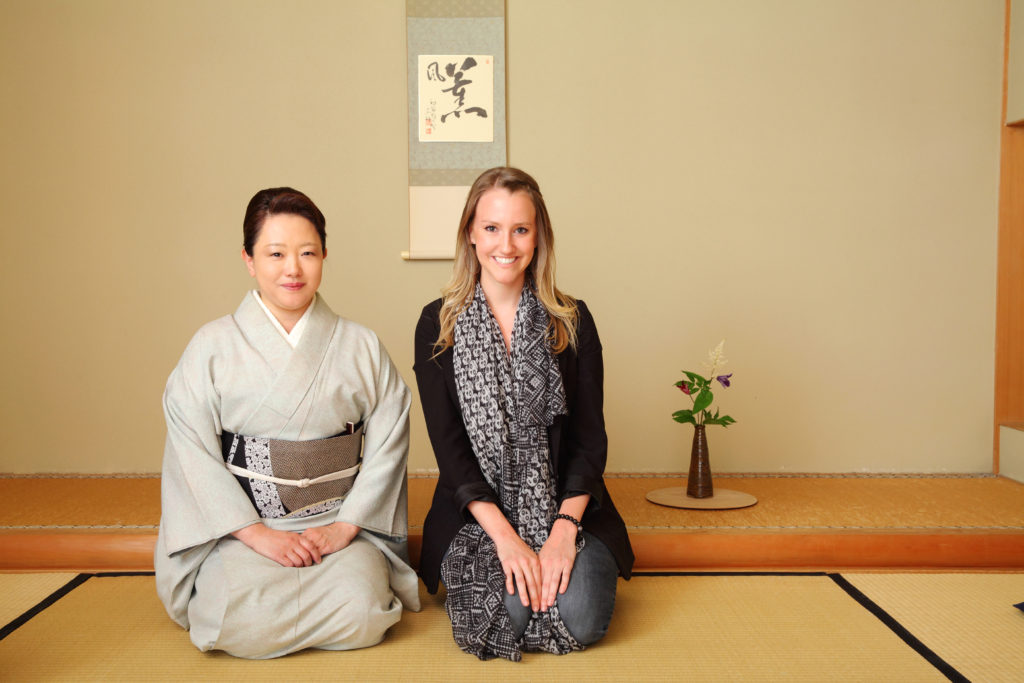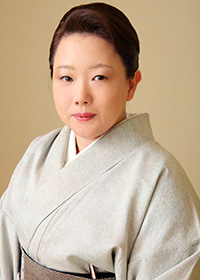After learning the traditional ways of the Sansai-ryu Tea Ceremony I had the pleasure to personally hear Naoko’s story. I was most intrigued with how long it took Naoko to master the art of the ceremony, and why it was most important to her. With the help from Masami in translating this is what she told me…
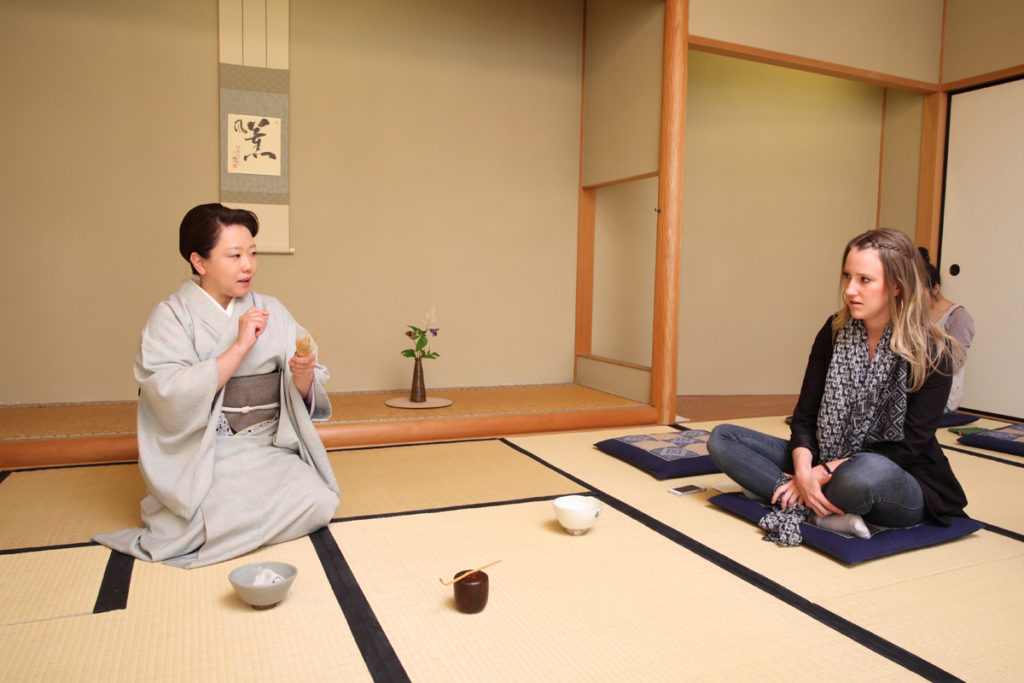
Naoko: “I started learning about tea when I was three years old. There was no choice about it. I was born into it. Tea has been in my family for twenty-one generations. I have now been practicing the tea ceremony for more than 40 years. Everything in my life is about tea. It just came naturally to me. The environment I was surrounded by was perfect for tea. I learned everything from my father, and grandfather. But my grandfather mostly taught me; we were very close. Since I grew up around tea, I never really thought about what was most special about it. I have come to realize it is not just about the tea. The tradition connects the seasons to the tea, the house (interior and exterior), the garden, the flowers, the food, and Mother Nature. Every little piece has meaning in the Sansai-ryu Tea Ceremony, and that is what is truly most special.”
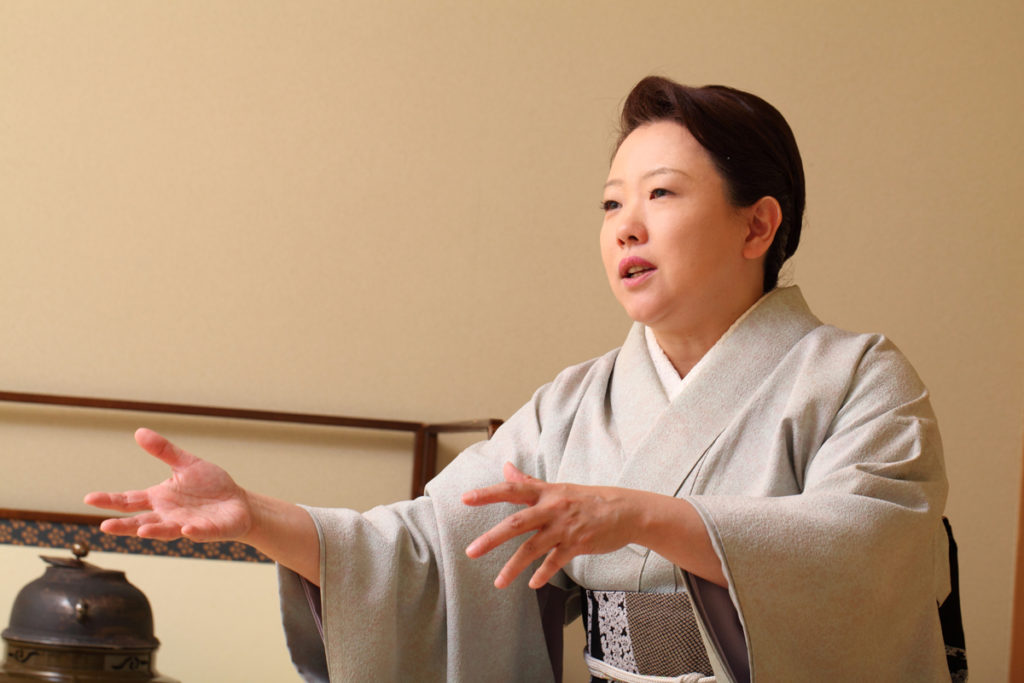
Naoko also explained some other special facts about the ceremony to me, which included:
1. The beautiful, and big teapot, which sat in front of us, boils the hot water used for the tea. Water, which is a part of the five elements, gives a special meaning to the ceremony. Everything is based around these five elements.
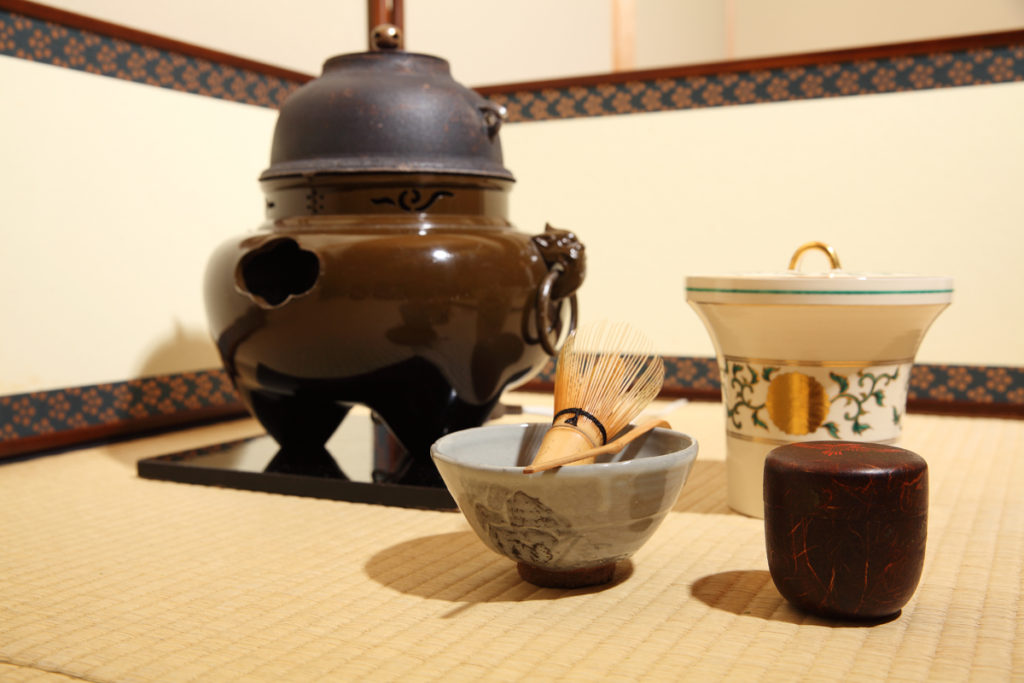
2. There are two types of tea used for this ceremony. The first type is called Koicha. Koicha is intense, strong, not watery, thick, and expensive. It is used mostly in special occasions because of how expensive it is. You must eat before drinking Koicha, and there is usually a special course menu prepared. The second type of tea is called Usucha which is the tea I had the privilege to try, and is most common in the ceremony since it is less strong, less expensive, more watery, and not as intense as the other type of tea. With Usucha you do not have to have a special course meal before, but you may want to enjoy some sweets. My favorite fact about tea was learning that when tealeaves are picked they are aged just like wine. The longer they age the more intense the tea.
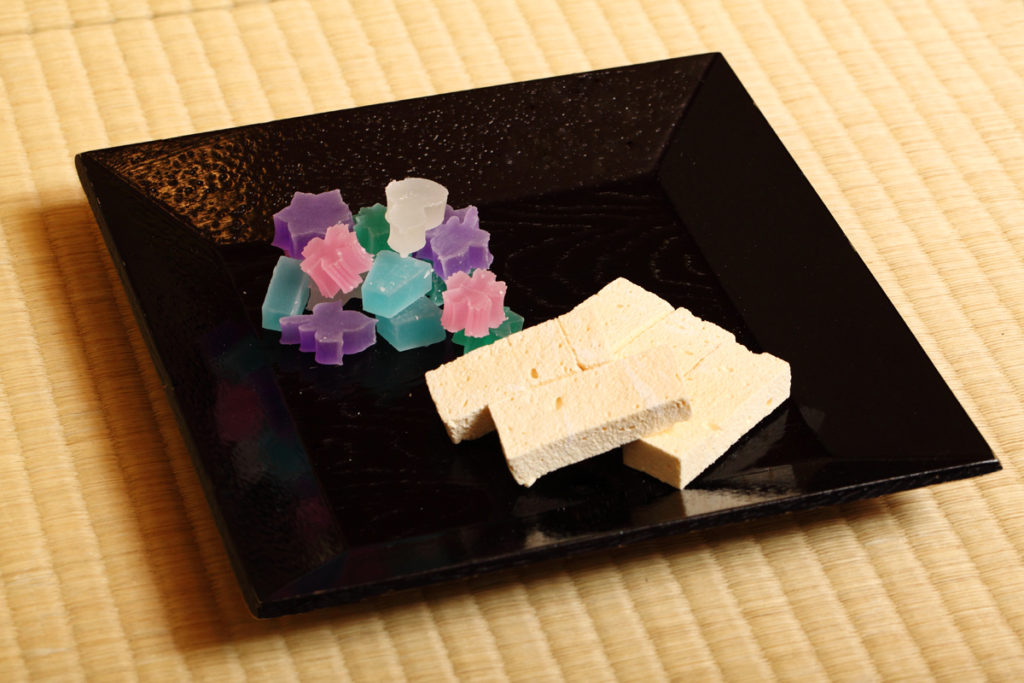
3. The spoons used in the preparation portion of the ceremony are made from bamboo. These bamboo spoons have bended naturally with heat. Bamboo growth is season sensitive, for example the size in winter is different than the size in summer. What fascinated me the most is that if submerged in water they become completely straight again, so these are never washed with soap and water like all other utensils.
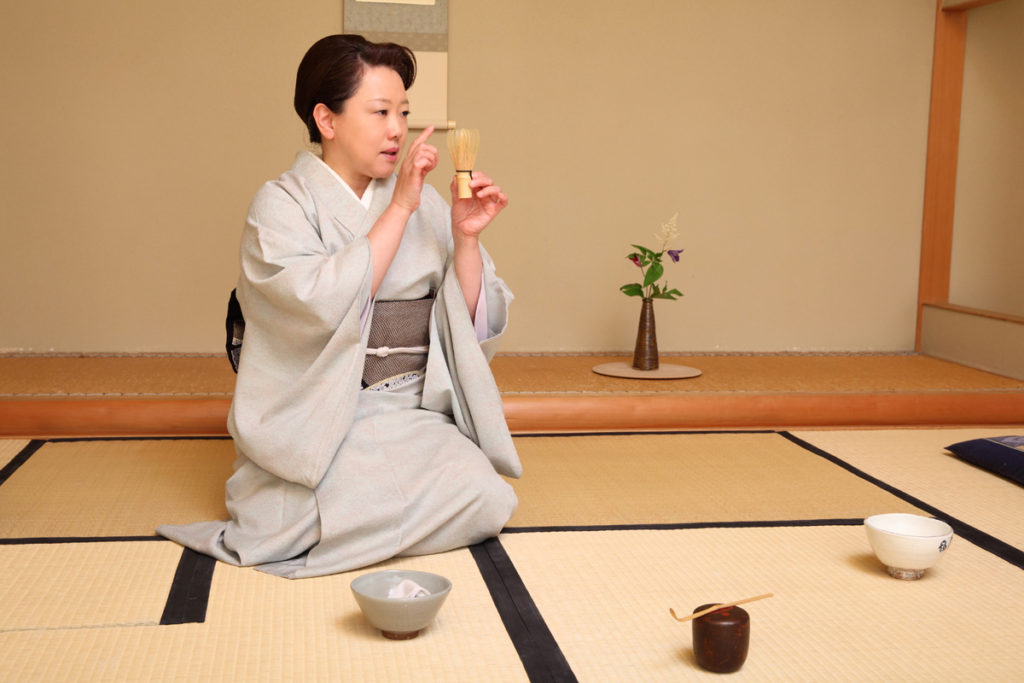
I am very grateful to have had the opportunity to enjoy the Sansai-ryu Tea Ceremony, and personally meet Naoko. This is a once in a lifetime experience!
Thank you for reading!
